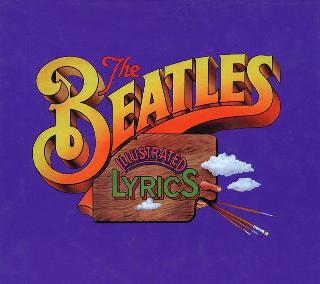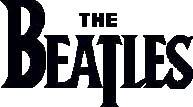Index
Home
Vorige
And I Love Her
Composer(s) : Lennon and McCartney
Year :
Chords/Tabs: And I Love Her
Notes On "And I Love Her" (AILH)
Copyright 1989 Alan W. Pollack
All Rights Reserved
The plaintive bittersweetness of "And I Love Her" derives in large measure
from it's tonal ambiguity; is it in a Major or minor key ?
The song continually flip-flops back and forth between the minor key
(c#-minor) and it's relative Major (E-Major). Another major point of
interest (and source of ambiguity) in this song is that it makes a delicious
modulation up one-half step at the beginning of the guitar break, but more
on that later. Some quicky technical tutorial first because it will save
time later.
Major/minor Relatives, and Pivot Chords
** Technical background on** Major and minor keys are said to be mutual
"relatives" then they share the same key signature. (e.g., C major/a minor,
F major/d minor etc.).
Implicit in sharing the key signature is the fact that they share the same
chords, although each chord has a different harmonic/grammatical meaning
(i.e., crudely put, a different Roman numeral) depending on which mode you're
in. For example, in the pair of keys C major/a minor, the d minor triad is
common to both but it's the II chord of C and the IV chord of A.
The ample selection of common chords in this situation makes it very
easy to modulate between the two keys. Such chords are called "pivot" chords
when they're used to effect a smooth modulation from one key to another. In
terms of aural perception, one experiences such a chord initially in the old
key, but within the following two chords, one retrospectively hears it as part
of the new key; a kind of harmonic pun. **Technical background off**
Tonal Ambiguity as Seen from an Harmonic Synopsis
INTRO
The intro repeats the following progression of two chords. I think one hears
it as a "weak" (i.e. non-dominant) cadence toward the Major. I won't dwell
on it, but starting on a non-I chord in this context is itself ambiguous.
Think about it, if you stop the song after the first chord, what key would
you think you were in ?
f# -> E
E: II I
VERSE
So far we think we're in E major, but the next thing that happens
at the beginning of the verse ("I give her all my love ...") is that
the f#-minor chord moves to the c#-minor chord in a IV ->I cadence;
this is repeated three times and I think one gets the definite
sensation of being grounded in the relative minor. And yet, in the last
line of the verse ("You'd love her too..."), we move from the c# minor
chord to a straightforward IV -> V -> I cadence right back into
E major again. All this goes down quite smoothly because of the
pivots which can be schematically shown as follows:
Intro Verse
--- 2x----- ---- 3x -----
f# ->E ->f# ->c# ->A ->B ->E
E: II I II IV V I
c#: IV I VI
BREAK
The above verse is repeated and then we arrive at the break section
"A love like ours ...". Here again, we pivot (this time on c#) in
a momentary flirtation with the key of g#(!), then appear to be cycling
back toward E on the words "near me", only to pivot back again
immediately for the next verse starting in c#:
break verse
----- -----
c# ->B ->c# ->g# ->c# ->g# ->B ->f# ->c#
E: VI V VI III V II
g#: IV I IV I
c#:IV I
By the way, note how the contour of the chord progression in this
break echoes in some way that of the verse; down a step, back up,
down a fourth, etc. I don't believe that the composer actually sits
there and conceptualizes this, but I also don't believe it's a
random coincidence.
GUITAR SOLO
At any rate, the verse repeats again, then, instead of a repeat of
the break, we get a verse-worth's of guitar solo. But not so fast --
in the instant in which the guitar solo commences, the music neatly
modulates up one half step; if the original key pair was E/c#, we're
now in F/d; from the world of 4 sharps to one of one flat.
Now, such upshifts for later verses have been a staple of the 2-minute
love song since the fifties but this one is unusual because the first
chord in the new key is its IV chord. It's a real attention grabber
because it contains no notes in common with the previous key. In this
specific case, we're talking about a g minor chord (g-b-flat-d) plunked down
in a neighborhood of 4 sharps! A sort of triple cross relation.
Once we get a few bars further and the new tonal plane is established it's
no big deal in retrospect; you'd have to listen to the song several times
in a loop to necessarily notice that you've ended up higher. Nonetheless,
the moment of impact of that g triad is special. If I got away with calling
the WCWIO refrain a time warp, then this one is the harmonic equivalent.
CODA
There is one final verse following the solo in which everything is as
before except that everything is a half tone higher, followed by a coda
very similar to the introduction with one critical difference:
g ->F -g ->D *Major*
F: II I II
d: IV I#3
The song ends ironically on the Major version of the relative minor;
I would half expect the sheet music to contain a ":-)" at the end.
(This gambit has been around since the Baroque period in which it was
considered dissonant to end on a minor chord so all pieces in minor
keys ended in those days in this manner -- the fancy term is the
Piccardy Third, no kidding.)
So What's *the* Answer ?
Which relative key is the song in; major or minor ? Consider the evidence:
- the intro is in the Major
- the verse is in the minor for more than half its length let always
shifts to the Major at the end.
- the break goes to a different key, comes around to the Major only to
go right into another verse with its predmominant minor opening.
- there is only one break section, but there are 5 verses including the
guitar solo.
- IMHO, the upshift modulation is irrelevant to the Major/Minor question
and was added in to relieve what otherwise would have been a
tedium of too many verses in a row without break.
- the coda, while ending on the root of the Minor, is nonetheless a
Major chord.
- on the one hand, there are several strong IV-V-I cadences in the
relative Major and none in the relative minor. On the other hand,
I believe if you tally the total number of measures in the minor
verses Major, then minor wins out.
If you insist on my making a binary decision, I'd hesitantly give it to the
minor key "on points" (like a boxing match), but it's kind of moot; the
ambiguity per se is what is germane here.
Regards,
Alan (awp@mirror.tmc.com)
---
"They tried to fob you off on this musical charlatan,
but *I* gave him the test."
Ook op A Hard Day's Night:
Ook op 1962-1966:
Ook op On Air - Live At The BBC Vol 2:
(c) 2024 Serge Girard


 (c) Alan Aldrigde, The Beatles Illustrated Lyrics
(c) Alan Aldrigde, The Beatles Illustrated Lyrics